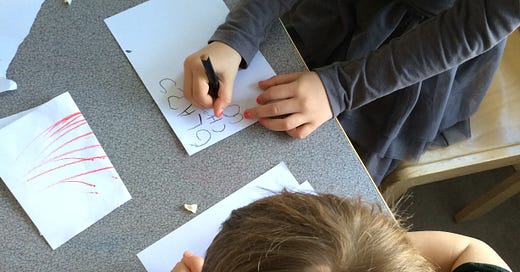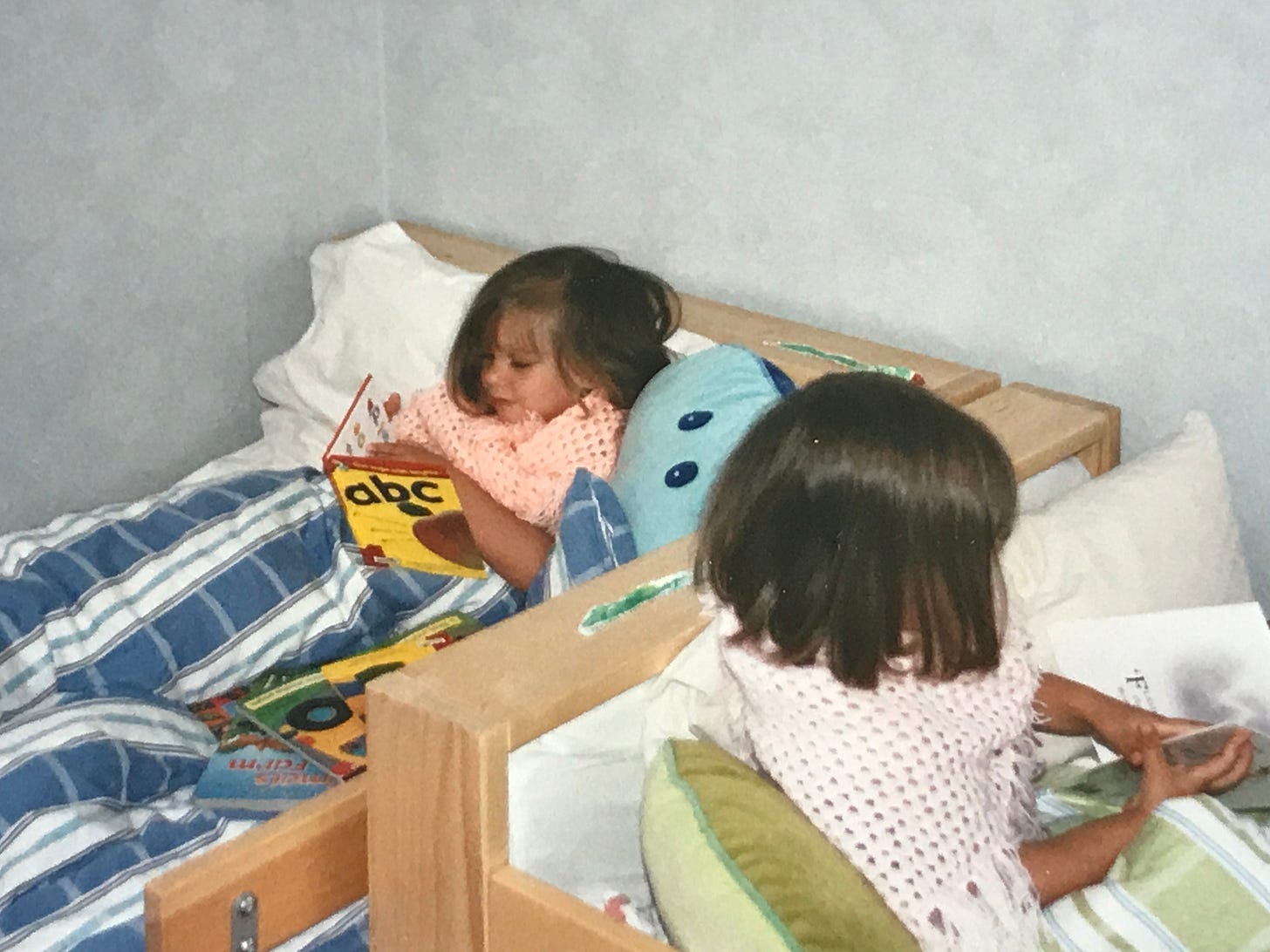Reading for Joy
Sadly, over the years, the MUST of reading has become more and more the focus rather than the joy of reading
and more concerning - teaching children to read has become a for profit business, rather than a responsibility of the older generations to share this skill. With methods with training programmes for teachers, and worksheets that get updated to ensure more payment is required, rather than sustainable approaches to scaffolding children’s reading skills.
It's why I am grateful that here in Sweden we don't have to formally teach reading - instead the curriculum expects us to foster the skills needed for reading, expose children to a literacy rich environment and experiences, and scaffold children who show a natural curiosity to read (and write) which usually is contagious. And before you know it you have children who are reading and writing without being formally taught.
I am one of those educators who likes an alphabet on the wall - usually high up, so less as visual clutter, and always with easily decipherable images like a ball for Bb, so that when children are wanting to write something on their own, and wants to know what a Bb looks like, they can write it, I can point out the ball and they can copy the letter, rather than trying to describe the letter, as so many letters at straight lines with a ball attached to it. And eventually the children remember and can remind each other which letter belongs to which image, and they don’t need me, until the know their letters.
If the children I am with are very interested in letters, then I will make sure there are letters further down on the wall for them to interact with easier. If I have children that are easily overwhelmed by lots of things on the wall, then the alphabet can be in a file/binder or a book for them to leaf through and find. There is no one set way to do this. The letters are there to scaffold their interest in letter forming, reading and writing. They are not a must but a known strategy for scaffolding the children in a meaningful to them way.
I am also very aware of mouth maturity - some sounds are harder than others depending on the maturity of the mouth as well as the experience and practice it has at forming these sounds. So a lot of our “reading skill” practice is make lots of silly sounds and laughing together, and pulling faces as parts of a game to see what our mouths, tongues and jaws can do. They are short and sweet and not long lessons of drilling children to pronounce as early as possible, but short episodes of silliness that the children are totally unaware of their pedagogical purpose, and tend to work as creating community, a sense of belonging and building trust with me, their teacher, as we giggle together. Thus allowing children to evolve their ability to pronounce the sounds in their language of communication.
In Sweden we have children in preschool until the year they turn six when they start preschool class in school that August. Sadly this preschool class year is set to become the new first grade - unless we manage to put a stop to it. For some unearthly reason, because it’s not rooted in research, the Swedish government is wanting to start school earlier, when the rest of the world where children already start earlier are wanting to postpone school start.
Now, if school was structured in such a way that it was about supporting children’s learning through safe and brave spaces, and creating authentic learning communities, I doubt I would have any issues with school starting earlier. But sadly the school system is authoritarian in nature, and has the transmission of factual content, rather than creating learning communities, as it’s primary focus - which continuously pushes the teacher to control the classroom in order to transmit (more and more control is needed the larger the class and the greater the spectrum of learning ability/experience when following a tightly scheduled content delivery is required).
The joy of working in preschool without having a school-readiness push to be able to receive content, is that my role as educator is to scaffold and facilitate the children’s learning. Being play-responsive means I am more sensitive to what the children’s brains are actively learning.
The joy of working in the early years (free from school ready agendas) is that we get to see and guide the whole child and understand that the children evolving their physical, emotional and social skills, experiences and knowledges are every bit as important as their cognitive, and that without supporting all four of these areas a child will struggle in one or more of these them.
The joy of working in a free-from-school-readiness-agenda preschool is that we understand that cognitive development is sense-making, meaning-making and world-making and that there are knowledges - not just the academic kind but also practical, emotional and social; and that play is vital to manage offering children this complexity of knowledge-creating.
The joy of working like this is that time and time again I have seen my 5-6 year olds leave preschool, without any formal reading and writing lessons and yet every single one of them can read their name and the names of all the others. Most can recognise all the letters and numbers, and many words that are important to them. Some are writing these down too. And that a few can read and write. Because their natural curiosity, and their play-fuelled desire to learn, has pushed them to seek out how, and to have the energy and enthusiasm to keep at it. Their joy is contagious and this spreads. And by focusing on responding to the play of each and every child, as both individuals and a group, we have created a community of learners where reading is filled with joy and purpose and we have not had to abandon the adventure, wonder and imagination of stories that inspire children and they can identify with, for the “boring” books that lack this ability due to having to adhere to a set sound/letter to be learned on a specific day (which can be done in game-like fun ways - but I tend to see it more as sugar coating a bitter pill, rather than offering nutritious tasty delights that nourish the children’s love of reading/learning)
A child that takes joy in reading will discover the world through texts of fact and fiction.
children working together to write a shopping list as we prepare a meal for their parents. We only needed one, but there was determination to make many, in case we lost one. Looking at each others, to work out how to form letters and words. Because we learned that asking for help, and being inspired by others is a way to learn and sharing our work and ideas is not “cheating” when we are a community of learners.
And yes, this is a photo of writing - but the purpose was for reading.
my daughters play often included lots of reading - before they could “read the writing” they were reading the images on the pages





